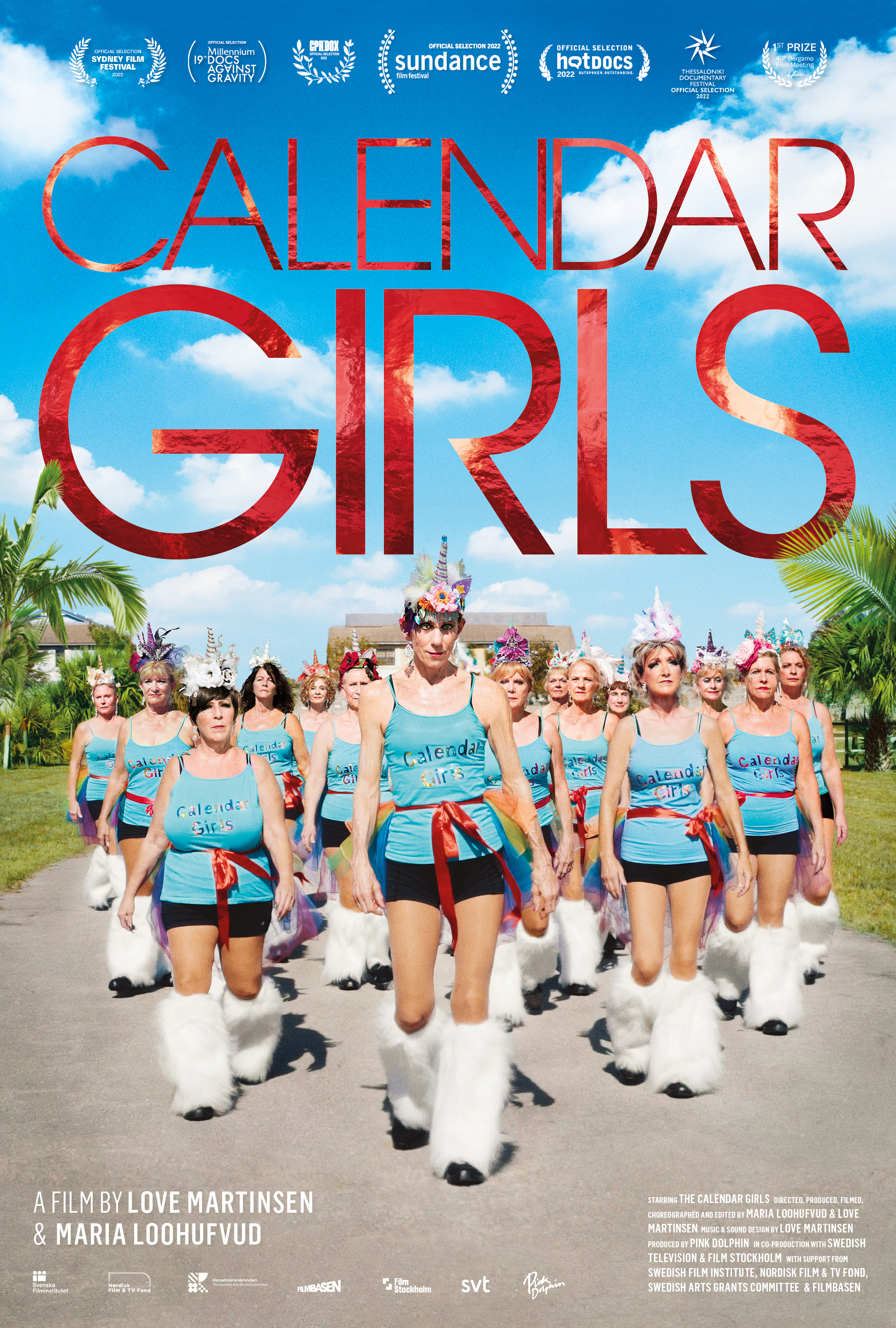Eye For Film >> Movies >> Calendar Girls (2022) Film Review
Calendar Girls
Reviewed by: Jennie Kermode

Early on in Maria Loohufvud and Love Martinsen’s documentary, one member of the Calendar Girls dance troupe describes how she first came across them, in a mall. They were spectacularly dressed as always and she admired their strong legs. Then she got a little closer and realised with delight “Oh my God, they’re my age!”
Baby Boomers, long at the forefront of our cultural narratives, are now in their sixties and seventies. You won’t have to look far to find articles about how 60 is the new 40, etc. – but what these articles tend to have in common is a focus on celebrities, entrepreneurs or other high flyers. There’s still a serious lack of role models for ordinary women who want to feel, upon reaching that certain age, that they can still be seen as beautiful, that they can be glamorous, that they can have fun. The Calendar Girls are living proof that you don’t need plastic surgery and a personal trainer to achieve that. They also serve as a reminder that life is worth celebrating whether or not other people approve.

Fairly light and simple in its approach, but nonetheless engaging, the documentary consists of interviews with various members of the troupe, some of whom are coming to the end of their time there, and footage of it in action, performing in community centres and retirement homes or posing in a local park for a calendar photoshoot. There is also training footage which, whilst it may not look arduous to younger viewers, emphasises that this is physically demanding activity, especially when some performances last for 45 minutes, and demonstrates that there is skills involved. You will notice those legs, as smooth and shapely as those of the average twentysomething because they are so well maintained.
One might think that the women’s husbands would see the benefit of activity which kept them in such good shape, but sadly, not all are supportive. There is professed embarrassment (which might be jealousy) over them dressing in skimpy, sequinned costumes in public. There is also an intimation that they would prefer their wives to stay at home and do the cleaning. “I had three children and let me tell you, I am done with that,” one woman says.
When the women speak one to one, a lot of the conversation is about family, about caring for children and parents and now moving on to care for grandchildren. Some, however, have had careers. One talks about her life as a vice cop – “I bought and sold a lot of drugs” – before hearing loss saw her forced into early retirement. Now sturdy black boots sit side by side with fluffy white unicorn slippers.
There are a lot of different costumes, all loving crafted, sometimes by people who previously had no idea that they possessed creative skills. Little pink dresses, furry legwarmers, beribboned floral headdresses with unicorn horns. Star spangled banner camisoles, skimpy shorts, stockings and suspenders. There is no room for shyness. Jewellery is big and glittery, make-up bold. Glamming up is transformative, one says, “like a superhero kind of thing.”
Alongside all the glamour is a history of charity fundraising and a strong inclusive ethos. One woman describes being adopted by the troupe after getting out of prison – how it helped her to reconnect with society, and how she never felt judged. The only rule is that one has to be at least 60 to join. Of course, this means that some people don’t get to stay for long, with age and illness taking their toll. The women accept the physical realities of ageing, despite this being cause for some sadness, but they have no truck with the idea that their social status must change accordingly or that they should hide away from the world.
The photography in this film is not glamorous, not styled to flatter, but simply observes the women as part of the day to day world. Without the soft focus common in representations of female subjects, we get to see their faces in all their lived-in three dimensionality, full of personality and in some cases strikingly good looking. We see the power in how they have chosen to represent themselves, but also the defiance in, here and there, unadorned faces, bare arms, naturally aged skin. We see them taking up space in the world. We see them dancing just for the love of it.
Reviewed on: 29 Oct 2022















